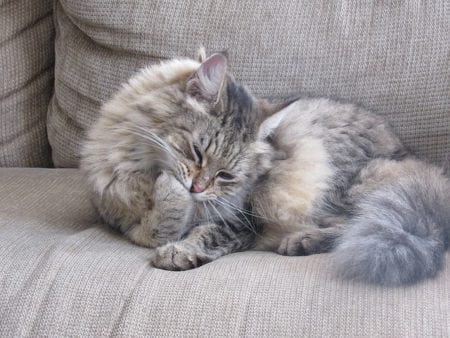Dogs, cats and other smaller pets bring a lot of positive and joy to their masters. Alas, but along with a good mood in the house, along with them there is wool, traces of claws and teeth on furniture and wallpaper and many other minor troubles. We will try to give you some useful tips on repair, choice of finishing materials and furniture that will help pet owners to keep their interior in a pristine condition for longer, and will be safe and comfortable for their pets.
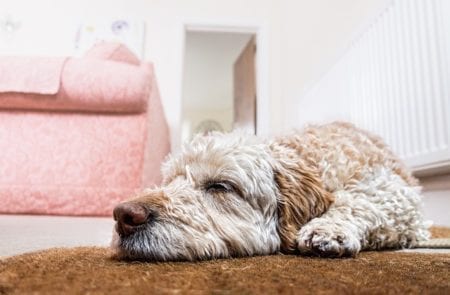
Image credit: Fran_BFF
Useful tips for animal lovers:
- choose roller blinds for windows instead of long drapes. They are unlikely to spoil your pets
- metal and plastic blinds will attract unnecessary attention with their rustling, so it is also not recommended by specialists
- in the place where the favorite stove of your dog or cat is placed, you can lay an extra piece of carpet and periodically wash it and replace it
- a variety of kittens, small houses and toys are able to distract the pet from damage to furniture and wallpaper, so they should not be neglected
- use scavengers for animals
- if there are houseplants in your house, make sure that they are safe for animals and will not lead to poisoning if your cat, for example, decides to eat it (harmless for animals, begonia, koleus, three-color murlete, cacti, pepermia)
Flooring
The floor covering in the house where dogs or cats live, is subjected to much greater loads and tests than usual. When choosing it for moisture and wear resistance, as well as resistance to mechanical damage should pay special attention. According to all these parameters, undoubtedly, the most suitable variant of the flooring is tile and porcelain stoneware. Of course, not everyone is ready to make tile floors in the living room or bedroom, however, if you have to walk a dog every day, ceramic tiles and a warm floor in the hall area will be invaluable.
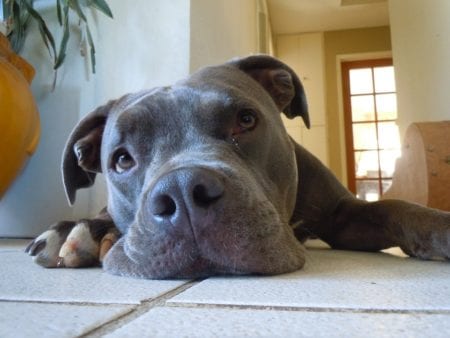
Image credit: Mikorad
Unlearned kittens and puppies bring the greatest damage to repair, however tile floors, wall panels and furniture covers can save the situation.
Linoleum is one of the most budgetary floor coverings, which often appears in the field of view of buyers. Such a floor is easy to install and clean, does not absorb moisture and smells, but the claws of animals can leave noticeable scratches on it, and a large dog does not need to tear the normal linoleum with teeth.
If there are pets at home, you probably will have to forget about fluffy carpets with long nap. At the same time, until the pet is accustomed to the toilet, any carpeting from the floor is best removed.
Another significant drawback of linoleum is a slippery surface on which animals can be pawed, which can lead to injuries or broken interior objects.
Slippery surface of laminate or linoleum can bring to problems with joints or posture in large animals and the development of osteopathy in dogs of large breeds.
Laminate flooring today is the most popular version of flooring, but is it suitable for a house where dogs or cats live? Among its advantages are low cost, ease of cleaning and anti-static, thanks to which the wool is not electrolyzed and does not stick to the surface of the floor. However, you should choose only high-quality laminate with a high class of wear resistance, otherwise the wet troubles of your pets very quickly will cause the floor covering to become unusable.
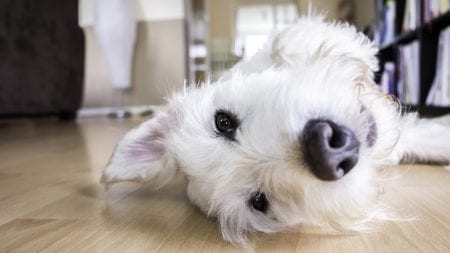
Image credit: Fran_BFF
Floors made of laminate do not cause serious damage to cats and dogs of small breeds, but for large animals they are undesirable
The floors from the laminate can be quite “loud” and the clatter of claws on it, especially if it is a question of a large dog will be very significant.
Walls
Walls suffer from the activity of pets no less than floors, so simple paper wallpaper is clearly not a good choice for an apartment with animals.
If you are going to decorate walls with wallpapers, give preference to better washable vinyl wallpaper or fiberglass wallpaper for painting, which are quite good wear resistance and withstand multiple painting.
Advice: for painting walls it is better to use washable paints on a water basis.
The most practical and durable option of wall decoration is to use a variety of wall panels for the lower part of the wall that is within the reach of the animal. The material for the manufacture of such panels can be practically any. Artificial stone will also not only look spectacular in the interior, but will not suffer from the encroachments of teeth, beaks and claws. Decorative panels are usually easy to clean, wear-resistant and allow the replacement of individual damaged areas.
An interesting way out of the situation can be decorative plaster, but you should also choose not the most tender varieties that can withstand wet cleaning.
Doors
Pets, trying to enter the room or asking for a walk, often scratch and spoil the doors. To avoid damage, the front door can be decorated with anti-vandal plastic or a thick layer of metal spraying, which can not damage even large animals. On the soft upholstery of doors, of course, one should forget once and for all.
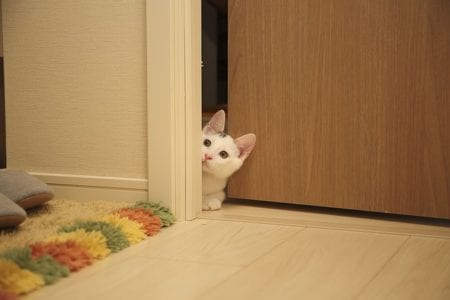
Image credit: StockSnap
Interior doors are better to choose with laminated or plastic trim, as natural wood or veneers pets can easily scratch, which, given the cost of such a decor, is unlikely to please owners. In order to solve the problem of closed doors blocking the access of pets to a particular room and causing their active protests, it is possible to make special slots for animals in the interior doors or use special stoppers that look much more attractive than a traditional piece of folded newspaper.
Cushioned furniture
Preservation of upholstered furniture, perhaps, causes the greatest concern among animal lovers. However, you can hardly manage without sofas and armchairs in an apartment, no matter how many pets live in the dwelling, so it is only necessary to choose the most suitable fabric for upholstery and not to neglect regular cleaning.
Image credit: skeeze
Experts recommend using flock or chenille as an upholstery fabric. Dense pile prevents the appearance of hooks, does not electrify and easily tolerates wet cleaning.
When choosing upholstery fabrics, carpets or rugs for the house, make sure that the villi have been cut, as the claw of the animal can catch on to the loops, which can lead to painful injuries.
If an expensive sofa appeared in your house before the animal, a good choice from the situation will be textile covers for furniture, which you can sew yourself or order in any sewing workshop.
Of course, in order to maximally effectively reconcile the good repair and the pet of the family, you should carefully study the nature and habits of the animal, in order to take into account exactly what precautions will be required in your case. On the training and education is also not worth forgetting, because without them the comfort in your home will depend to the greatest degree.




